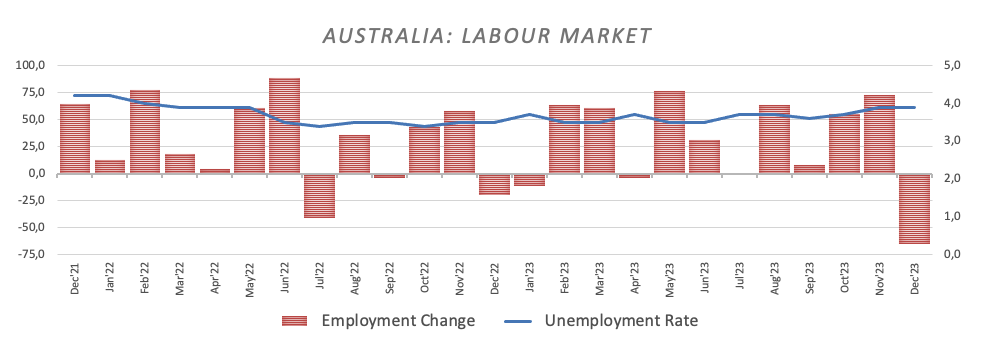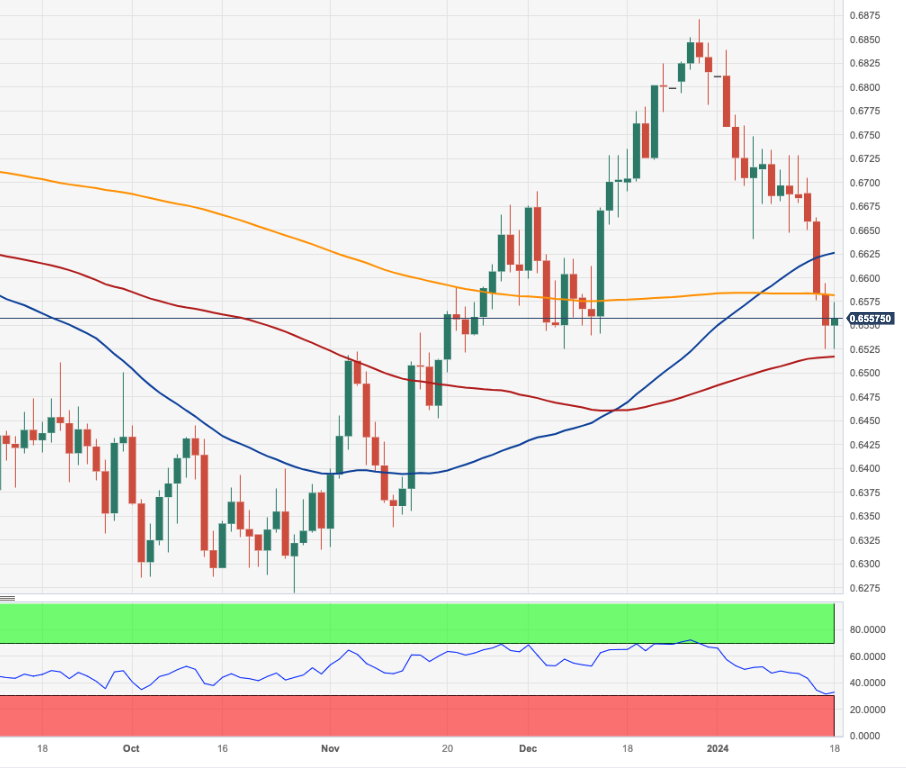- AUD/USD bounces off YTD lows near 0.6520.
- The Australian jobs report disappointed investors.
- Extra pullbacks are likely below the 200-day SMA.
In quite a volatile session, AUD/USD managed to reverse several sessions of losses and advance marginally on Thursday.
The daily recovery in the Aussie dollar came despite the intense march north in the greenback and disheartening prints from the domestic labour market report for the month of December.
On the latter, the Unemployment Rate held steady at 3.9%, while Employment Change shrank by 65.1K individuals. Of note is that Full-Time Employment Change dropped by 106.6K, the largest single-month drop since May 2020.


Meanwhile, the pair fully faded the rally seen in the second half of December, while the recent break below the 200-day SMA leaves the door wide open to further retracements in the short-term horizon.
Back to the monetary policy front, recent inflation figures tracked by the Monthly CPI Indicator in combination with soft readings from the jobs report allow us to infer that the RBA will most likely keep its OCR unchanged at its February meeting.
In the meantime, US dollar dynamics, persistent disappointment from Chinese fundamentals, intense weakness in commodity prices (especially copper and iron ore), and the expected steady hand by the RBA should all contribute to the continuation of the bearish tone in AUD/USD, at least in the short-term horizon.
AUD/USD daily chart


AUD/USD short-term technical outlook
A drop below the 2024 low of 0.6524 (January 17) could motivate AUD/USD to dispute the transitory 100-day SMA at 0.6513. Further deterioration in the outlook should drag the pair to the 2023 bottom of 0.6270 (October 26). If bulls regain control, the attention will shift to the December 2023 high of 0.6871 (December 28), which comes before the July 2023 high of 0.6894 (July 14) and the June peak of 0.6899 (June 16), all of which are before the critical 0.7000 level.
Spot seems to have entered a consolidative phase on the 4-hour chart. In fact, the breach of the year-to-date lows raises the prospect of a move to 0.6452. The MACD remains in the negative zone, while the RSI rebounds above 32, allowing for some near-term bounce. The bullish trend, on the other hand, may encounter first resistance at the 200-SMA at 0.6684, followed by the 100-SMA at 0.6715, which is considered the final line of defense before the previous high at 0.6870.
View Live Chart for the AUD/USD




